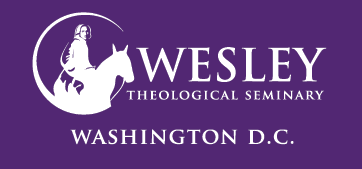“Do not be alarmed; you are looking for Jesus of Nazareth, who was crucified. He has been raised.” – Mark 16:6
April 4, 2021
This holy week I was on Wesley’s campus and many of the offices were closed as most faculty and staff are working from home under our Tier 3 protocols. The buildings and grounds were empty and there was an eerie sense of stillness. However, there was also a feeling of hope and anticipation. The tulip bulbs planted by the buildings and grounds grew last winter were blooming in the courtyard. New lines were painted on the parking lot in anticipation of the day when students would drive to campus for class. There was a stillness, which gave me liminal feeling of waiting or “in-betweenness.”
This past year has been one of the most difficult periods of recent history. There have been over a half million COVID-related deaths in the US and almost three million worldwide. Unfortunately the Wesley Seminary community has not been exempted from the life-threatening reach of this virus. The health pandemic has also revealed structural inequalities in our society and world as the pandemic impacted more vulnerable communities disproportionately due to the pre-existing structural inequalities of racism and wealth disparities. The COVID-19 pandemic has been an X-ray machine that has revealed other pandemics that cannot be treated with a vaccine. How do Christians understand and interpret the resurrection in the midst of these difficult times?
Forty years ago this week I visited the Holy Land. I participated in a Palm Sunday procession that entered the city gates of Jerusalem with Christians from all over the world. I went to the Garden of Gethsemane on Maunday Thursday, Good Friday mass, a sunrise service at Golgotha on Sunday morning and an Easter mass at the Church of the Holy Sepulcher. As I reflect on the meaning and significance of these events, I find the Easter message even more compelling. That in the face of Jesus’ crucifixion and death, God offers a message of hope in the midst of despair. On the third day, Mary Magdalene, Mary the mother of James and Salome went to the grave to anoint Jesus they found the stone had been rolled away and Jesus was not there. The angel said to them: “Do not be alarmed; you are looking for Jesus of Nazareth, who was crucified. He has been raised.” God had thwarted the enemies’ attempt to silence the Good News and Jesus overcame death with life.
This year the church has wrestled with our roles in the aforementioned pandemics. In what ways did churches continue in-person worship and contribute to the spread of COVID? In what ways has the church been complicit to white supremacy and structural inequalities? While churches debate whether to re-open for in-person worship, this is really not the question. This is the issue captured in the media by high-profile cases, but the church is not a building. The church is the body of Christ. The church is a community of disciples and Christ followers. We are called to follow Christ’s teachings with a message of Good News beyond the four-walls of the church building.
We have been challenged this year with the question of how to be a seminary community in diaspora. Our studies and our community are not centered around a building. We paused coming to campus, but we continued to be a learning community beyond the walls. And in the midst of the multiple pandemics, the act of continuing forward theology is an act of resistance. It is faith in the midst of despair. The act of answering God’s call to ministry and engaging in theological education is an investment in the future. In the midst of multiple pandemics, reading, writing and reflecting on God’s word is a sign that sin and death will not have the last word. It is an act of faith that we have hope for a better tomorrow.
The root word of “seminary” is seed. A seminary community is called to plant and cultivate seeds for the future of the church and society. Just the tulip bulbs that were planted before the winter in anticipation of spring, a seminary prepares leaders to serve for the church and society that is yet to be. As we nurture, support and encourage one another we are cultivating a fertile seminary community of Easter people. Freshly painted lines on the parking lot say to our community: “we expect a full parking lot again.” The women went to the tomb in anticipation and the stone was rolled away. Christ is risen! We are proclaiming that death will not have the last word. God will continue to call, students will answer their call and the seminary will be a learning community. The story of resurrection is that the risen Christ is the answer to forces of evil that impede God’s promise to the world.
As the vaccine roll-out becomes more robust and accessible, as we work to challenge systemic racism and structural inequalities in our churches and society, as we see the signs of spring with tulips blooming and a freshly painted parking lot, we are reminded of the creative power of God to generate new life. Christ’s resurrection is an unequivocal renunciation of despair with the hope of the triumphant resurrection over death. This is why Christians are called Easter people who follow a risen Christ. I invite you to enter into this Easter season by planting and cultivating seeds of new life.
Dean Phil Wingeier-Rayo, PhD
